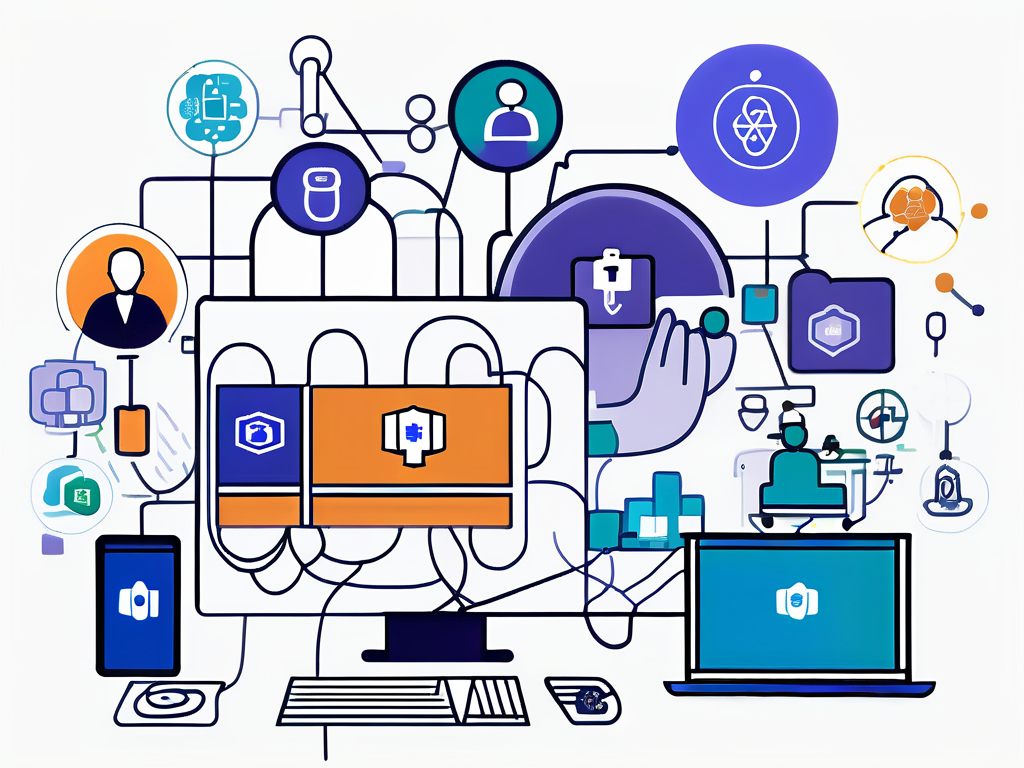Understanding the Basics of Microsoft Teams
Defining Microsoft Teams
Microsoft Teams is a collaboration platform that integrates with the Microsoft 365 suite, enabling teams to communicate and collaborate seamlessly. Just imagine a digital workspace where all your conversations, files, and projects reside—ready for action at a moment’s notice. In a world that often feels scattered across email threads and endless text messages, Teams acts as a beacon of organized productivity.
Launched in 2017, Microsoft Teams has quickly evolved into a powerful tool that not only encourages communication but also revolutionizes how teams approach their work. It combines chat, video meetings, file storage, and application integration—all in one place. Whether you are a remote worker sipping coffee in pajamas or a corporate warrior in a suit, Teams is designed to cater to your needs. The platform’s user-friendly interface allows for easy navigation, ensuring that even those who are less tech-savvy can engage effectively. With features like threaded conversations and the ability to tag team members, Teams fosters a sense of community and collaboration that is essential in today’s fast-paced work environment.
The Purpose of Microsoft Teams
The primary purpose of Microsoft Teams is to eliminate the silos of communication that can inhibit productivity. It aims to foster a more inclusive and cohesive environment where team members can easily share information, solve problems together, and drive projects forward. By centralizing various collaboration tools, it allows companies to streamline their processes, enhance engagement, and ultimately improve project outcomes.
Moreover, Teams is not just a tool; it’s a platform that adapts to fit various workflows. From real-time collaboration on documents to hosting large-scale webinars, Microsoft Teams can serve different functions depending on the organization’s unique needs. The versatility of the platform makes it an indispensable tool in today’s dynamic work culture. Additionally, with the integration of third-party applications and bots, users can customize their Teams experience to include everything from project management tools to customer relationship management systems. This adaptability not only enhances productivity but also allows teams to maintain focus on their core tasks without the distraction of switching between multiple applications.
Exploring the Features of Microsoft Teams
Communication Tools in Microsoft Teams
At its core, Microsoft Teams is about communication. It provides a rich tapestry of tools designed to enhance dialogue among team members. Through chat features, users can send instant messages, allowing for quick exchanges without disrupting workflow. The ability to create channels enables teams to organize discussions by project or topic, keeping conversations streamlined and relevant.

Adding a sprinkle of humor, think of Teams as the metaphorical water cooler—where colleagues gather to share ideas, jokes, and the occasional meme. The video calling feature further aids communication, allowing teams to connect face-to-face, regardless of geographical barriers. And who doesn’t love a good virtual background that makes you look like you’re in a tropical paradise while actually being at your cluttered desk?
Moreover, the platform also includes features like threaded conversations, which allow users to respond directly to specific messages, creating a more organized dialogue. This is particularly useful in larger teams where conversations can quickly become chaotic. With the option to tag team members in messages, you can ensure that the right people are notified and engaged in the discussion, making communication even more efficient. The integration of emojis, GIFs, and stickers adds a personal touch, transforming mundane exchanges into lively interactions that can boost team morale.
Collaboration Capabilities in Microsoft Teams
Collaboration is where Microsoft Teams shines brightest. The platform allows multiple users to work on documents in real-time through integration with applications like Word, Excel, and PowerPoint. This means no more endless back-and-forth emails trying to track the latest version of a file! You can also comment directly on documents, keeping feedback centralized and organized.
Additionally, Teams supports the integration of various third-party applications, providing users with customizable tools to enhance their workflows. From project management apps to shared calendars and even fun integrations like Spotify, the possibilities are virtually endless. It’s like having a buffet of collaboration tools laid out before you—grab what you need and keep your team moving forward!
Furthermore, the platform’s file sharing capabilities allow users to upload and share documents seamlessly within channels, ensuring that everyone has access to the latest materials. The built-in OneDrive integration means that files are stored securely in the cloud, making them accessible from anywhere. This flexibility not only enhances productivity but also fosters a sense of teamwork as members can contribute to projects from different locations and time zones. With the ability to schedule meetings and set reminders directly within Teams, the coordination of collaborative efforts becomes a breeze, allowing teams to focus on what truly matters—creating great work together.
The Benefits of Using Microsoft Teams
Enhancing Teamwork with Microsoft Teams
One of the most significant benefits of using Microsoft Teams is its ability to enhance teamwork. The platform functions as a central hub, allowing team members to stay aligned on their goals and objectives. By using dedicated channels for specific projects, it ensures that everyone is on the same page, reducing the chances of miscommunication.

Moreover, Teams encourages inclusivity by allowing everyone to contribute ideas, regardless of their physical location. This fosters a culture of collaboration where diverse perspectives are valued, leading to more innovative solutions. As they say, two heads are better than one. Imagine what a whole team of heads can accomplish! The ability to share files, conduct brainstorming sessions, and engage in real-time discussions makes it easier for teams to harness their collective intelligence. With features like threaded conversations, team members can revisit discussions and ideas at any time, ensuring that no valuable input is lost in the shuffle.
Streamlining Workflows with Microsoft Teams
In today’s fast-paced world, efficiency is key. Microsoft Teams streamlines workflows by integrating various tools and resources into a single platform. As a result, team members can shift their focus from managing tools to focusing on the tasks at hand. Features like task management, calendaring, and app integrations reduce time-wasting switching between applications.
One particularly compelling aspect is the ability to automate routine tasks through Power Automate in Microsoft Teams. This means that mundane, repetitive tasks can be set on autopilot, leaving you free to tackle more interesting challenges. Who wouldn’t want to transform their workday into a more productive and engaging experience? Additionally, the integration with Microsoft 365 allows seamless access to Word, Excel, and PowerPoint, enabling teams to collaborate on documents in real time. This not only enhances productivity but also ensures that everyone is working with the most up-to-date information, minimizing errors and improving overall project outcomes.
Microsoft Teams for Different Industries
Microsoft Teams in Education
Microsoft Teams has found a significant foothold in the education sector. Educators can use Teams to create virtual classrooms, facilitating lessons and discussions among students, even when they can’t be physically together. Features like Assignments allow teachers to distribute and collect work, while Teams channels help organize different subjects or projects.

Additionally, the platform aids students in collaborating on group projects from anywhere in the world—in their pajamas, of course! With tools for communication, document sharing, and video conferencing, Teams is becoming an essential part of modern education.
Microsoft Teams in Business
In the business world, Microsoft Teams is equally transformative. Companies utilize it for everything from project management to daily standups. Teams can easily connect with clients via video calls, ensuring that valuable relationships can thrive, regardless of physical distance. It maximizes productivity by keeping all team communications in one organized space.
Moreover, businesses can create custom workflows that align with their specific goals, utilizing the plethora of integrations available within Teams. This tailored approach ensures that organizations can navigate challenges efficiently and effectively, making Microsoft Teams a cornerstone of contemporary business operations.
Getting Started with Microsoft Teams
Setting Up Microsoft Teams
Getting started with Microsoft Teams is a breeze. Users can either download the desktop application or use the web version, allowing for flexibility depending on preferences. Once set up, teams can create channels, invite members, and start customizing their workspace to fit their needs. It’s like moving into a new home—you get to decorate it just how you like!
Moreover, Microsoft offers extensive support and training resources to ensure that even the most technophobic individuals can conquer this digital realm. So, no need to panic if you’ve never used collaboration tools before; there are plenty of guides and tutorials available to help usher you into the Teams experience.
Navigating the Microsoft Teams Interface
Once you’re all set up, you’ll find that navigating the Microsoft Teams interface is quite user-friendly. The sidebar contains all the essential tools you need—from chats and teams to calendar and files. A few clicks here and there, and voila! You’re orchestrating communications and collaborations like a seasoned pro.
Utilizing the search bar at the top can quickly lead you to conversations, files, and even application shortcuts, making the discovery of information as easy as pie. No more digging through endless folders or scrolls, just smooth sailing through your projects. And every once in a while, don’t forget to take a moment to appreciate how far technology has come—especially when you can share cat videos in the same space you discuss quarterly meetings!

Leave a Reply